Continuing my visit to Penn, to keep my promise to Noelle Granger. The first part can be read here and the second part can be found here:

There is so much to notice in the church at Penn… far too much to take in at a single visit. Even the grave markers and monuments each have a story to tell and, while I seldom spend a lot of time reading inscriptions on a visit, here there were too many that bore names important to history to simply ignore them.

All around the church there is evidence of not only the history of the building, but of its people and patrons across over eight hundred years.

Faces, shields and heraldic symbols look down upon you are you explore. You know that each one means more than you understand… and know that you will be trawling the heraldry websites again in search of their stories.

The royal connection, going back to the gentlewoman who was nurse to kings seems to be ever present. But the symbols of a deeper lineage take precedence, because, in spite of the status of the patrons of this parish church, the Church itself predates their noble houses, and some of the original consecration crosses still survive. Lost for centuries beneath the whitewash and only recently uncovered, they are amongst the best I have seen.

In complete contrast, the window that celebrates the eight hundredth anniversary of the church uses light and colour to celebrate the longevity of the dedication.

Another ‘modern’ window celebrates the American connection by commemorating the visit of the Bishop of Pennsylvania in 1948 to the area where William Penn was born.

His ancestor had, as the window describes, sailed with William Penn, but the window was another memorial too, given by the father of a flying officer…

One little side chapel displays the banner of the local Mothers’ Union. These banners appear in most churches and are often incredibly beautiful examples of the needlewoman’s work.

The same chapel is floored with fragments of locally made medieval tiles, going back to the fourteenth century, while within it stands a simple altar…

…and above it, the Millennium painting echoes the colours of the tiles and continues the universal theme of Light. The one thing I didn’t get, was a picture of the Tudor and Stuart brasses of the Penn family. But that is because I was distracted by something I could barely believe…

It is a much older painting that is the undoubted treasure of this little church. When I saw it, I stood open-mouthed for a good while… how can colours quite so bright have survived for so long? And what must it have looked like, six hundred years ago, when the paint was fresh?

The Penn Doom is a rare tympanum painted on oak, one of only a handful to survive from the fifteenth century. According to the gentleman who came in and told me about the problems with the organ, the two right hand boards are older still. The Doom shows Christ seated in Judgement with the newly wakened dead rising from their graves. Curiously, given what we will be doing at the April workshop, he appears to be seated on a rainbow. Apparently, there may be more paintings yet hidden beneath the whitewash of this little church, and if so, you have to wonder what they yet might find. For me, though, this was enough… and hopefully, my son,seated patiently outside in the car for far more than ten minutes, would agree.








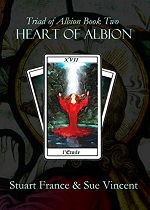






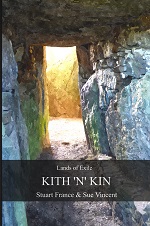


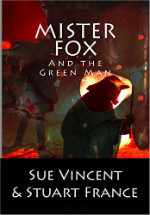





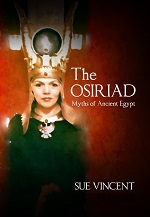










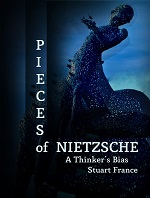
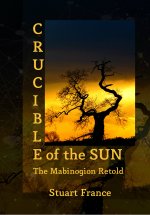





Pingback: Inside the church at Penn II — Sue Vincent’s Daily Echo | yazım'yazgısı
Thank you 🙂
LikeLike
Sue, thank you for this trip to the church at Penn. All your write-ups are fascinating and i always enjoy them. I have to tell my brother, a teacher of English history at an American colege, about your woinderful blog,
LikeLike
Thank you, David. I am glad you enjoy them… I love eing able to share the old places.
LikeLike
A fascinating place for sure, Sue, but I felt something else there too. And I wonder why part of that ancient painting was obliterated?
LikeLiked by 1 person
Most of the gorgeous medieval paintngs were destroyed or painted over during the Reformation as being ‘idolatrous’. many are being rediscovered beneath the whitewash of older churches… but you have to wonder what has been lost…
LikeLiked by 1 person
Reblogged this on Sun in Gemini and commented:
From Sue…
LikeLiked by 1 person
Always thrilled by these updates. That needlework was incredible!
LikeLike
There are so many treasures in the old churches 🙂
LikeLiked by 1 person
Fascinating tour, Su. Thank you.
LikeLike
Thanks, John, glad you enjoyed it 🙂
LikeLiked by 1 person
Looks like my e is acting up again. 🙄
LikeLike
I’m having a similar problem with some of my letters… I believe the toast crumbs are to blame 😉
LikeLiked by 1 person
Mine’s potato chips
LikeLiked by 2 people
Goodness, Sue this is a find. That’s another one for my list then. The consecration crosses, those medieval tiles and the doom look amazing and worth the journey alone. Thanks for sharing.
LikeLike
The Doom is incredible, Alli, and definitely worth the trip all on its own 🙂
LikeLiked by 1 person
Another gem to add to the list 🙂
LikeLike
It really is 🙂
LikeLiked by 1 person
🙂
LikeLiked by 1 person
What beautiful windows! I think I’d rather have the shields looking down at me. The faces might be spying. This is another example of the beauty and history of your part of the world that amazes me. Hugs, dear friend.
LikeLike
I rather think the idea behind some of the faces at least is to let worshippers know they are being watched over 😉 Hugs, Michelle.
LikeLiked by 1 person
I’m sure you’re right.
LikeLiked by 1 person